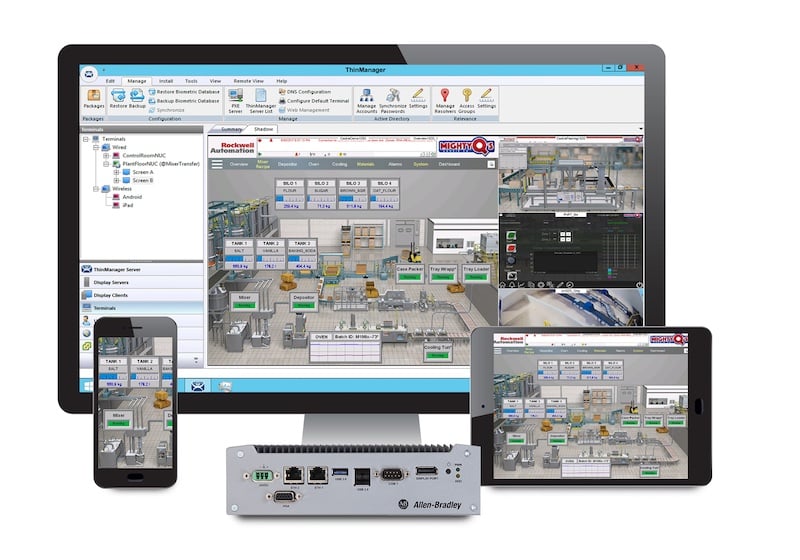What is Machine-to-machine Communication?
Learn about some of the machine-to-machine communication methodologies, including wired and wireless M2M communication techniques.
Machines are increasingly generating data at an unprecedented scale. Many machines are capable of collecting and processing data to execute tasks. A much more efficient model of operations can be attained when the machines can share data between them. It makes the machines smarter with more information and allows them to make informed decisions.
Machine-to-machine (M2M) Communication
Machne-to-machine communications happens when machines automatically exchange information between them, without relying on human intervention or middleware devices. According to the strictest definitions, there should be absolutely zero human intervention or other devices in between for communication between two devices. However, there might be some human intervention or servers in the middle of data transfer between two devices in practical use cases.

Various companies specialize in M2M communication, as shown here. Image used courtesy of Siemens
A vending machine relaying its stock levels to the supply chain software, an ATM asking for authorization to dispense cash from the bank servers, a credit card reader authorizing a transaction, etc. are examples of machine-to-machine communication. The opportunities and advances that are presented by M2M communication are endless. According to experts, technologists are only scratching the surface of what can be done with M2M communication. Some examples of applications of M2M communication would make the concept clearer.
- A washing machine/dryer connected with M2M communication capabilities can be used to send a signal at the end of the washing/drying cycle to the users. The machine will have smart capabilities to enable communication to send the signal to the user.
- HVAC systems with M2M communication capabilities can be turned on in advance using a smartphone. The house/room will have the perfect temperature by the time you arrive home.
- Smart refrigerators can analyze what is left in them and automatically create a shopping list according to routine needs. It can even have the capability to order the products in time to arrive fresh in time for consumption.
The examples above are of what a general consumer will be able to experience. But it has much broader applications in various industries which will be discussed later. First, let us look into the major distinction between the two major types of M2M communication.
Wired and Wireless M2M Communication
The two main types of M2M communication are wired communication and wireless communication. Each of these functions a bit differently.
Wired Machine-to-machine Communication
In wired M2M communication, the data transfer between the devices occurs over a wired transfer medium. It can be fiber optic cables, EtherCAT, or even coaxial cables. The communication between devices in the same LAN network connected with only wired connections is also part of wired M2M communication.

There are various software platforms that support M2M communication such as Rockwell's FactoryTalk software. Image used courtesy of Rockwell
Wired communication networks are becoming rarer now. Most use cases are moving to wireless networks. Wired networks are only used in cases where wireless signals are susceptible to interference. It is also used in legacy systems that can be difficult to upgrade communication networks to a wireless system.
Wireless Machine-to-machine Communication
When machines use wireless communication methodology to communicate between devices, it is wireless M2M communication. M2M communication that majorly uses the wireless network for communication is termed as Internet of Things or IoT. The wireless communication methodologies used have a wide range from radio waves to the latest 5G technology.
- RFID – RFID or Radio Frequency Identification is quite an old technology that has stood the test of time. RFID technology communicates over radio wave frequency to enable wireless transfer of data. Now it is widely used in the logistics industry to track a package from start to finish. It is also used for provenance technology blockchains.
- NFC – Near-Field Communication or NFC is also similar to RFID but can only be used for short-range transfer of data. It is widely used for access control and payment systems. Payment applications like Apple pay and contactless credit cards make use of NFC technology to transfer data. It can also be used as an efficient mode of communication to transfer information between smartphones within a short range.
- WiFi – WiFi or wireless fidelity is widely used in homes and offices to access the internet wirelessly. The same network can also transfer data between devices connected to the same WiFi network. There have been many newer iterations of WiFi technology that increased the bandwidth and reduced communication latency. The latest WiFi technology that FCC has approved is WiFi 6e and can bring massive improvement for IIoT communication.
- Cellular Network – Cellular networks can also be made use of for wireless M2M communication. The very first wireless credit card readers used GSM technology or other 2G technologies for communication. Later communication was possible over HSPA (3G) and LTE (4G) networks. Now wireless communication is at the precipice of disruption with 5G communication technologies. 5G dramatically improves over 4G technology in terms of bandwidth and latency. Thousands of devices would be able to ‘talk to each other’ very fast and with very minimal lag over a 5G network. Implementation of 5G in the industrial setting is said to be akin to a new industrial revolution in the works.
The Importance of Machine-to-machine Communication
M2M communication is where machines can transfer data to other devices over a network without much human intervention. The transferred data can be used to improve the processes and for better control. M2M communication can be over a wired network or a wireless network, and they have been named accordingly.

ABB's Ability software working in a paper mill to support M2M communication. Image used courtesy of ABB
Many technologies can be used for communication for wired and wireless M2M communication. M2M communication is commonly used in large-scale industrial applications, and they will be discussed in detail in the next article.






